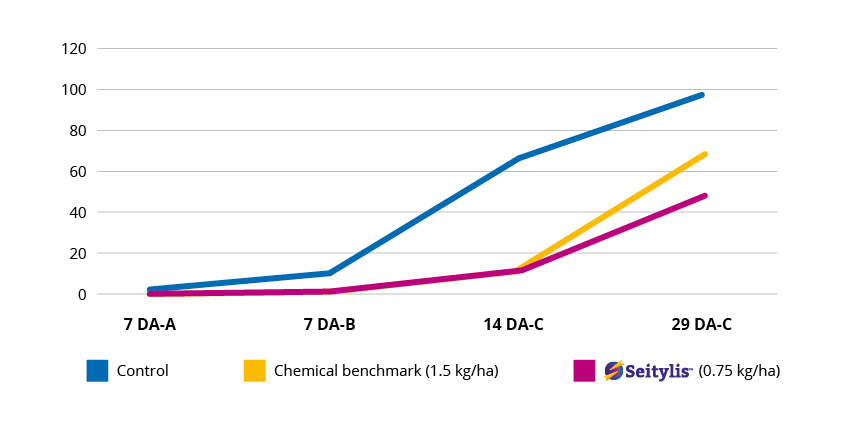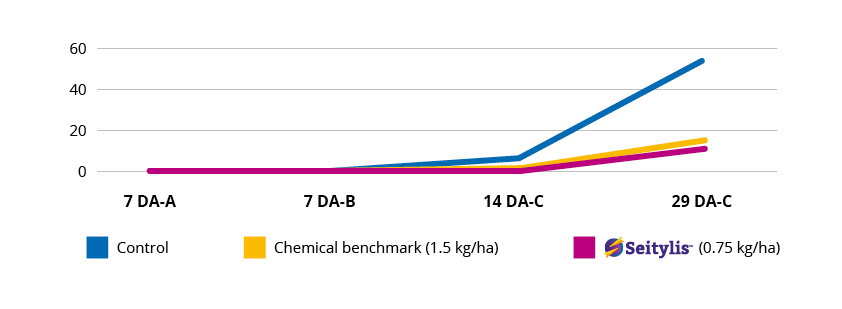Lettuce downy mildew: in search of allies to control the disease

If you observe light green-yellowish patches on the leaves, it is likely to be a symptom of lettuce downy mildew.
The disease, caused by the Bremia lactucae fungus, is one of the biggest headaches for lettuce producers given that as well as opening the door to other pathogens, it can cause significant production losses. Seipasa's newly-launched biofungicide, Seitylis, affords powerful control of the disease, acting as both a preventive and curative treatment.
Lettuce downy mildew (Bremia lactucae) can appear at any stage of the plant's development although it tends to occur at later stages, mainly on external, older leaves. In addition to chlorotic discolouring on the upper face of the leaves, another characteristic symptom is a fuzzy, whitish powder on the underside of the leaf, often mistakenly thought to be an element foreign to the plant.
Lettuce downy mildew can also appear on lettuce seedlings in the form of this same whitish mould, progressively turning yellow. In all cases the outcome is the same: the leaves dry and die off prematurely.
This disease of the lettuce attacks both outdoor and greenhouse crops. It strikes more severely in autumn and spring when conditions are optimal for the germination of fungal spores: cloudy, cool days with a high relative humidity affecting leaves and temperatures of between approximately 10 and 23ºC.
This is a disease that spreads quickly once the plant becomes infected. The most visible symptoms of mildew appear from the 5th day onwards and the infective process usually occurs more quickly in outdoor lettuces.
Biofungicides for controlling lettuce downy mildew
Once the first symptoms of downy lettuce mildew are observed, in conditions favouring the development of the disease Seipasa recommends the application of Seitylis, a new biological fungicide formulated from a state-of-the-art strain of Bacillus subtilis which offers effective control of this disease as well as others.
Seitylis provides an antagonistic effect which displaces pathogenic organisms from their niche and prevents them from developing. It produces specific lipopetides which act as natural antibiotics, capable of perforating the natural walls of the fungus, eventually causing its death.
Seitylis is also an activator of the plant's integrated defence system, enhancing it and preventing the attack of pathogenic agents.
Graph 1 shows the results of the efficacy test carried out on Abby lettuce to control mildew. Seitylis stops the sporulation of the fungus and presents a lower incidence vs. the chemical benchmark.

Graph 1. - Lettuce downy mildew. Disease incidence (% of leaves affected).
Along the same lines, graph 2 shows the efficacy of the product in stopping the progression of mildew on lettuces, again showing better performance than the chemical benchmark.
Graph 2. - Lettuce downy mildew. Severity of the disease (% of affected area).
In addition to applying these treatments, the recommended preventive measure is to dispose of crop residues that may be infected, to stop the spread of the disease to adjoining plots via the wind or rain water. It is also recommended that the crop atmosphere should be controlled as far as possible both in greenhouses and outdoors, by means of ventilation and adequate irrigation. Mildew grows in conditions of high humidity, making it is important to monitor this parameter to the extent that is possible.


